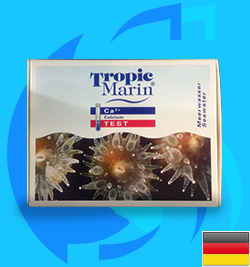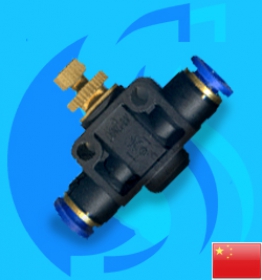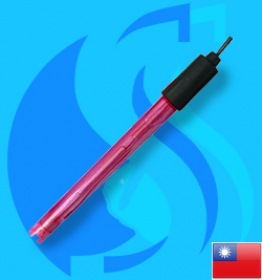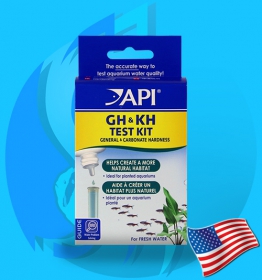Barcode 0619106281208
Tropic Marin Calcium-Test
For the determination of the calcium concentration in saltwater.
Calcium is one of the most important components of saltwater and largely determines the growth rate of organisms, which form calcareous skeletons like, for example stony corals and calcareous algae. In the saltwater aquarium, a regular addition of calcium ions is necessary because of the constant decrease of the calcium concentration caused by the metabolism of the organisms and by precipitation.
With a sensitivity of 4 mg/l, the Calcium-Test by Tropic Marin is the most accurate calcium test available. Special reagents intentionally make use of the high magnesium concentration of the saltwater, which usually interferes with aquarium calcium tests, and thus guarantee the outstanding dependability of the results. For approx. 40 tests.
Information:
What means the calcium concentration in the sea water aquarium?
Along with sodium, potassium, chloride and sulfate, magnesium and calcium are among the main components of natural sea water. For organisms that form calcareous skeletons, such as an a stony corals and coralline algae, calcium are important growth factors. There is a close connection between the calcium ion concentration and both the pH-value and the alkalinity of the sea water. With sufficient carbon dioxide, calcium forms calcium hydrogen carbonate which is utilized biologically, deposited as a carbonate in the calcareous skeleton of these organisms. If there is shortage of carbon dioxide, mostly calcium carbonate will be formed, which becomes less and less soluble with increasing pH-values. Because of the decrease of the calcium concentration, caused by the metabolism of organisms as well as by precipitation, a regular replenishment of calcium ions in the sea water aquarium is necessary. A careful control of the calcium content in the sea water aquarium makes it possible to guarantee optimal living conditions as near to nature as possible for all organisms and to prevent damage.
What is the recommended Calcium content?
The Calcium content of natural sea water is about 400-410 mg/l. this concentration should not really be exceeded in the sea water basin, otherwise the probability of precipitation causing a decrease in alkalinity and trace of elements in the solution.
If the calcium concentration sinks below 350 mg/l, Tropic Marin Bio-Calcium should be used for replenishment.
How can the calcium content be determined rapidly and accurately?
In a simple operation, the TROPIC MARIN Calcium test makes possible and accurate determination of the calcium concentration of the aquarium water and thereby a precise determination of the amount of magnesium and calcium that may need to be added.
To elevate a calcium concentration, use TROPIC MARIN BIO-CALCIUM, which will react with the basin water to form directly usable calcium hydrogen carbonate. Due to the composition of the TROPIC MARIN BIO-CALCIUM, no undesired by-product will be formed. The natural ion ratio of the sea water will stay constant.
Instructions:
This quick-test will accurately determine the magnesium and calcium concentration in salt water. Always read the dosing syringes from the bottom end of the small black O ring on the syringe plunger. Once filled there will be air between the end of the plunger and the liquid in the syringe. It is very important to keep the end of the yellow syringe tip submerged in the reagent during filling of the syringe.
Important: the syringe with the red lettering must ALWAYS be used ONLY for the reagent Calcium A (together with one second yellow syringe tip). The syringe with the black printing MUST ALWAYS be used ONLY for the reagent Calcium C. Using the syringes and tips correctly will eliminate any possible cross contamination of the reagents.
- Shake each reagent bottle well before every use!
- First rinse the both test vials with tap water and then, several times with the water sample to be tested. Use the dosing syringe 5 ml fill both test vials each exactly with 5 ml of tank water. Put one of the two filled test vials aside. This will be the comparison sample for step 6.
- Place one of the three yellow syringe tips on the red lettered 1 ml dosing syringe. Fill the syringe with reagent Calcium A, up to the 20 units mark and add the entire amount to the test sample.
- Close the test vial with the plastic stopper and shake the solution for a short time.
- Add a level measuring spoonful of powdered reagent Calcium B to the test sample. Close the glass vial with the plastic stopper and shake the solution until the powder is dissolved. The solution turns light blue.
- Remove the plastic stopper from the blue test sample. Place second yellow syringe tip on the black 1 ml dosing syringe and fill the syringe with reagent Calcium C, exactly up to the 1. 0 ml mark. One drop at time, slowly add reagent Calcium C to the blue test sample. Swirl glass test vial after each drop in order to mix the liquid thoroughly. Continue to add drops of Calcium C until the light blue solution turns colorless*.
In order to recognize the color transition easily, place both the test sample and the comparition sample set aside in step 2 on a white sheet of paper and sight from above into both test vials. The test is complete as soon as the test sample can no longer be distinguished from the comparison sample.
- After the test sample becomes colorless, read the residual amount of reagent C in the syringe, reading from the bottom of the black rubber O ring on the plunger. The following table shows the calcium concentration in mg/l which corresponds to the calcium in your test sample.
- Return any remaining reagent C in the syringe to the reagent bottle marked Calcium C. Rinse the test vials, the plastic stopper and the 5 ml syringe with tap water. If you are not going to immediately repeat another calcium test, rinse the small dosing syringes and syringe tips with tap water; be sure they are dry before the next use.
|
Reagent left in syringe
|
Ca
|
Reagent left in syringe
|
Ca
|
|
ml
|
mg/l
|
ml
|
mg/l
|
|
0,99
|
496
|
0,74
|
396
|
|
0,98
|
492
|
0,73
|
392
|
|
0,97
|
488
|
0,72
|
388
|
|
0,96
|
484
|
0,71
|
384
|
|
0,95
|
480
|
0,70
|
380
|
|
0,94
|
476
|
0,69
|
376
|
|
0,93
|
472
|
0,68
|
372
|
|
0,92
|
468
|
0,67
|
368
|
|
0,91
|
464
|
0,66
|
364
|
|
0,90
|
460
|
0,65
|
360
|
|
0,89
|
456
|
0,64
|
356
|
|
0,88
|
452
|
0,63
|
352
|
|
0,87
|
448
|
0,62
|
348
|
|
0,86
|
444
|
0,61
|
344
|
|
0,85
|
440
|
0,60
|
340
|
|
0,84
|
436
|
0,59
|
336
|
|
0,83
|
432
|
0,58
|
332
|
|
0,82
|
428
|
0,57
|
328
|
|
0,81
|
424
|
0,56
|
324
|
|
0,80
|
420
|
0,55
|
320
|
|
0,79
|
416
|
0,54
|
316
|
|
0,78
|
412
|
0,53
|
312
|
|
0,77
|
408
|
0,52
|
308
|
|
0,76
|
404
|
0,51
|
304
|
|
0,75
|
400
|
0,50
|
300
|
*If the test solution becomes clear after adding the first two drops of reagent C, it is an indication of a high calcium level. To test under these conditions, follow the test instructions above, filling the sample vials with 4 ml instead of 5 ml of tank water. To determine the calcium concentration with this smaller sample volume, multiply the value for the calcium concentration, read from the table above, by 1.25 to get the actual calcium concentration of your sample(compare to the following example).
Example:
|
Sample volume in ml:
|
4 ml instead of 5 ml
|
|
Remaining reagent left in syringe
|
0.85 ml
|
Brand : Tropic Marin
Model : Calcium Test
Range : 100 to 500 ppm.
Resolution : 4 ppm.
Solution 1 : 25 ml
Solution 2 : 5 ml
Solution 3 : 20 ml
Solution 4 : -
Number of Using of Solution 1 : 25 tests (1 ml / test)
Number of Using of Solution 2 : 50 tests (1 spoon / test)
Number of Using of Solution 3 : 20 tests at 400ppm (1 drop / 4ppm)
Type of water : Saltwater only
  Tropic Marin Bio-Calcium 500g (500ml) Tropic Marin Bio-Calcium 500g (500ml)
  Tropic Marin Bio-Calcium Actif 500g (500ml) Tropic Marin Bio-Calcium Actif 500g (500ml)
|
 zzz>>>>>>>>>>>>>>>>>>>>>>>>>>>> Tropic Marin
zzz>>>>>>>>>>>>>>>>>>>>>>>>>>>> Tropic Marin
 Tropic Marin (Tester) Calcium-Test (20 tests@400ppm)
Tropic Marin (Tester) Calcium-Test (20 tests@400ppm)


































 Tropic Marin Bio-Calcium 500g (500ml)
Tropic Marin Bio-Calcium 500g (500ml)
 Tropic Marin Bio-Calcium Actif 500g (500ml)
Tropic Marin Bio-Calcium Actif 500g (500ml)



